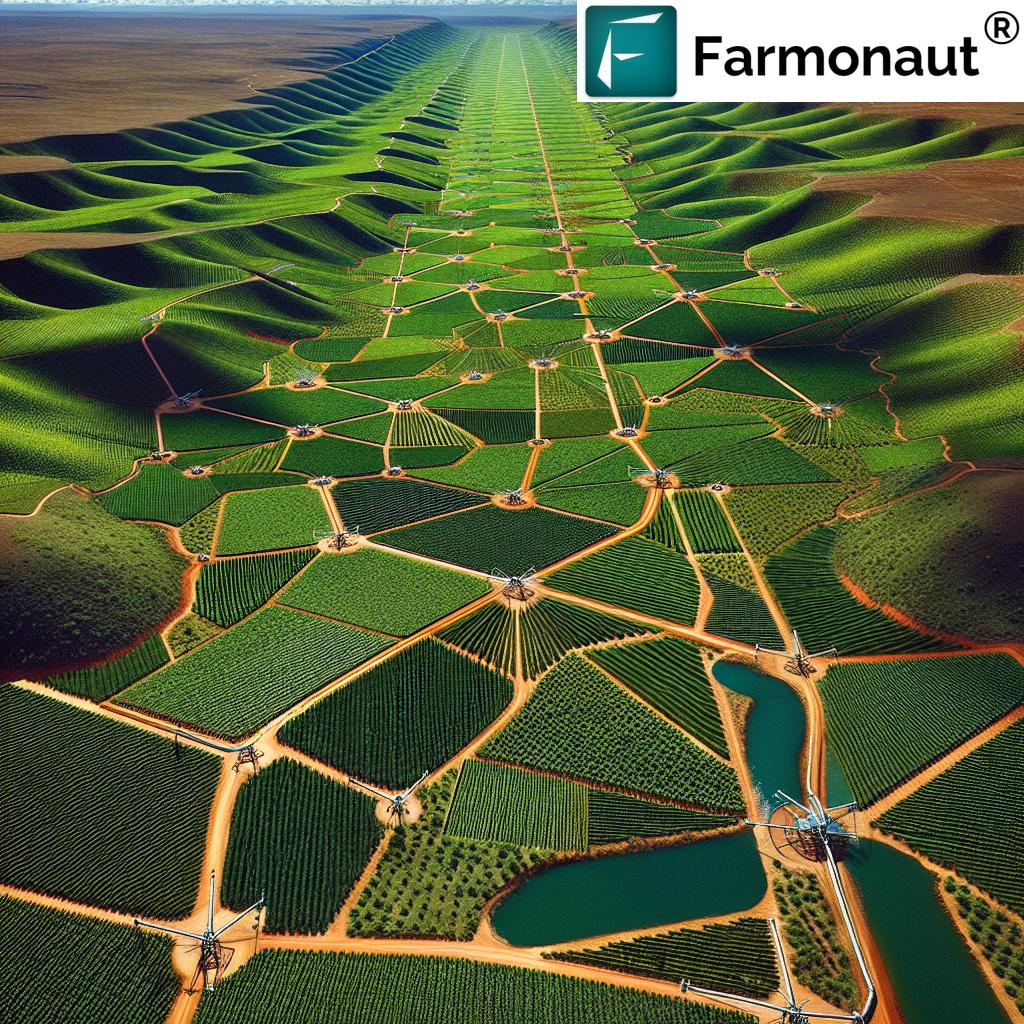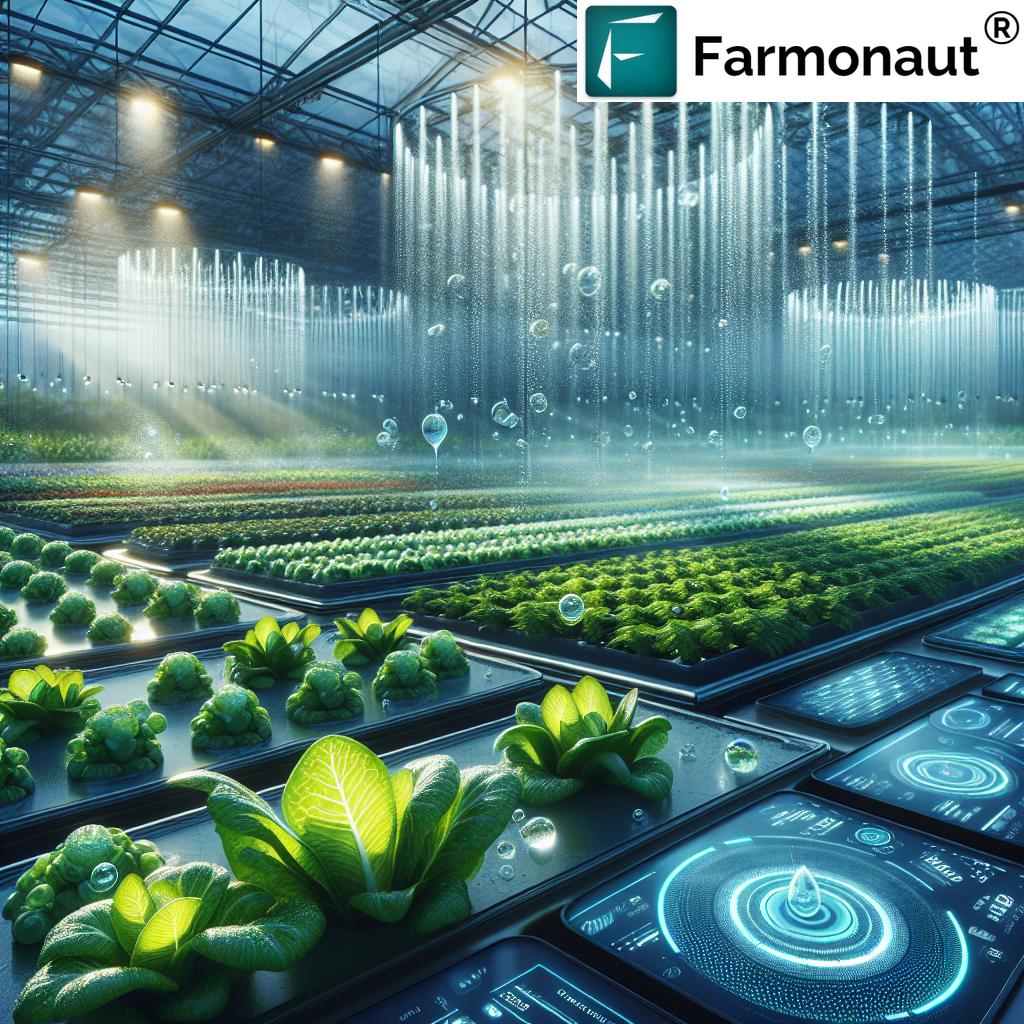Crops Grown in Mexico: 2025 Trends & Agriculture Insights
Meta Description: Crops Grown in Mexico: Discover key 2025 trends, advanced technology, and sustainability shaping the agriculture sector, from maize and avocados to export opportunities.
- Summary: Mexico’s Agriculture in 2025
- Agriculture of Mexico: Foundations for 2025
- Key Crops Grown in Mexico in 2025
- 2025 Mexico Crop Trends & Technology Adoption Table
- Export Trends and Global Markets
- Technological & Sustainable Innovation Transforming Agriculture
- Leading Agricultural Regions and Land Use
- Climate, Environmental Challenges, and Response Strategies
- Farmonaut’s Satellite Technology: Empowering Mexican Agriculture
- Government Policies, Investments, and 2025 Outlook
- FAQ: Mexico’s Agriculture in 2025
- Conclusion
“Over 55% of Mexico’s agricultural land is dedicated to maize, beans, and wheat production as of 2025.”
Summary: Mexico’s Agriculture in 2025
The agriculture of Mexico in 2025 remains a crucial pillar of its economy and rural livelihoods. Characterized by diverse climatic regions and fertile soils, Mexico produces a remarkable variety of crops. These contribute significantly to domestic consumption and export markets, spanning from staple foods like maize and beans to high-value fruits such as avocados and berries.
In response to growing demographic, environmental, and economic demands, the sector is embracing technology and sustainability. As we move through 2025, Mexican farmers face both opportunities and challenges, from climate change to technological transformation. This blog provides a comprehensive look at crops grown in Mexico, critical trends, technological advances, sustainability challenges, and the evolving outlook for Mexico’s agriculture.
Agriculture of Mexico: Foundations for 2025
The agriculture of Mexico is foundational to the nation’s food security and economic resilience. As of 2025, the sector supports millions of rural households and serves as a cornerstone of Mexican culture. The country spans numerous climatic regions, allowing for the production of a wide variety of crops.
- Diverse cropping systems: Mexico’s fields range from rainfed maize in Chiapas to irrigated wheat in Sonora and large-scale avocado orchards in Michoacán.
- Economic significance: The agricultural sector constitutes about 3.6% of national GDP and provides nearly 13% of the country’s employment in 2025 (source: national statistical agencies).
- Global player: Mexico remains a leading producer of staple and high-value crops supporting export markets worldwide.
The sector is adapting rapidly due to population growth, technology adoption, trade, and environmental change. Understanding crops grown in Mexico and the forces shaping the agriculture of Mexico in 2025 is essential to grasp its future.
Key Crops Grown in Mexico in 2025
The crops in Mexico reflect the country’s diverse regions and fertile soils. This diversity meets domestic consumption needs and powers export growth. Let’s explore the most significant crops and their roles:
Maize (Corn): The Heart of Mexican Agriculture
Maize stands as Mexico’s most critical crop, deeply linked to its culture, cuisine, and rural livelihoods. In 2025:
- Maize still dominates a majority of the agricultural land, especially in Sinaloa, Jalisco, and Chiapas.
- Both white and yellow maize varieties are grown. White maize is primarily for human consumption, forming the base for tortillas, tamales, and traditional cuisine. Yellow maize serves animal feed and industrial uses.
- Technological advances, including large-scale farm management tools, are helping optimize maize cultivation and water use.
Beans: Essential Protein Source
Beans are another key crop in the agriculture of Mexico, with black and pinto beans especially valued. As of 2025:
- Beans serve as an essential protein source for many Mexicans and are grown across multiple states.
- Stability in production ensures food security and supports domestic markets.
- Crop rotations with maize and wheat strengthen soil fertility.
Wheat: Strength in the North
Wheat is a major crop, grown particularly in northern states such as Sonora and Baja California.
- Sonora is renowned for its high-quality bread wheat, supporting domestic consumption and export.
- Optimal climate conditions in these regions favor grain production.
- Modern irrigation and precision farming practices are increasingly adopted for wheat.
Avocados: Green Gold and Export Flagship
Avocados have been dubbed the “green gold” of Mexico, symbolizing both economic and agricultural success.
- Michoacán stands as the global leader in avocado production, taking advantage of unique microclimates and advanced cultivation techniques.
- Export opportunities abound; avocados are in high demand across the USA, Europe, and Asia, fueling growth for Mexican producers.
- Technological adoption—such as carbon footprint monitoring—promotes sustainability in production.
“Adoption of sustainable irrigation technology in Mexican farms grew by 30% from 2020 to 2025, boosting water efficiency.”
Tomatoes, Berries, and Peppers: Powering Production and Export
- Tomatoes: A staple of Mexican cuisine and a major export to North American markets. Greenhouses and controlled environments are boosting yields and resource efficiency.
- Berries: Including strawberries, blueberries, and raspberries. Production is highly significant in Michoacán and Baja California.
- Chili Peppers: Integral to Mexican cuisine and global food industry, grown in many states.
Other Important Crops
- Coffee: Cultivated especially in Chiapas and Veracruz. The sector is embracing shade-grown and agroforestry practices for sustainability.
- Sugarcane: Vital for regional economies and processed for both domestic consumption and industrial uses.
- Fruits & Vegetables: Mango, lime, papaya, and a variety of vegetable crops underpin local diets and the export economy.
2025 Mexico Crop Trends & Technology Adoption Table
This table highlights the major crops in Mexico, estimating cultivated areas, yields, technology adoption levels, and sustainability for 2025. These benchmarks help illustrate how economic opportunity and sustainability intersect across crops grown in Mexico.
| Crop Name | Estimated Cultivated Area (hectares, 2025) | Projected Yield (tonnes/hectare) | Technology Adoption Level | Sustainability Score (1-5) |
|---|---|---|---|---|
| Maize (Corn) | 7,000,000 | 3.4 | Medium | 3 |
| Wheat | 730,000 | 5.7 | High | 4 |
| Avocado | 250,000 | 10.8 | High | 4 |
| Tomato | 54,000 | 34 | High | 5 |
| Sugarcane | 810,000 | 75 | Medium | 3 |
| Beans (black, pinto) | 1,650,000 | 1.1 | Medium | 4 |
| Berries (incl. strawberries, blueberries) | 55,000 | 14.8 | High | 5 |
| Coffee | 650,000 | 0.75 | Medium | 4 |
Notes: Area and yield are broad estimates for 2025, based on national projections and sector expert input. “Technology Adoption Level” indicates general use of digital tools, remote sensing, precision farming, and sustainability programs. “Sustainability Score” rates eco-friendly practices, including water efficiency, emissions, and soil management (5 = most sustainable).
Export Trends and Global Markets for Mexican Crops
The crops grown in Mexico make the country a leading exporter in international markets. In 2025:
- Avocados and tomatoes are the stars of Mexican exports, driving economic growth and rural jobs.
- Fresh fruit and vegetable production is highly remarkable for global opportunities, with berries and chili peppers fueling reputation for quality.
- Coffee and sugarcane play vital roles in both domestic consumption and export, especially from states like Chiapas and Veracruz.
Trade partnerships—particularly with the United States and Canada (USMCA)—remain critical, while new agreements and changing regulatory standards are shaping the sector’s competitive outlook.
To ensure authenticity and transparency for customers and partners, blockchain-based traceability solutions (see Farmonaut traceability module) are increasingly vital for Mexican agricultural export products, helping reduce fraud and enhance trust in international supply chains.
Technological & Sustainable Innovation Transforming Agriculture
Technological innovation is reshaping agriculture of Mexico by improving efficiency, productivity, and sustainability. In 2025, several key trends stand out:
Precision Agriculture and Data-Driven Decision Making
- Adoption of precision agriculture—using GPS, fleet management, automated irrigation, and smart equipment—enables farmers to optimize input use (fertilizers, water), reduce waste, and target problem zones.
- Satellite monitoring (for vegetation health and soil conditions) assists in timely interventions, enhancing yields and resilience against weather variability.
- Advanced digital platforms deliver real-time advisory, helping both large producers and smallholders bridge the gap to technology.
Environmental Sustainability and Climate-Smart Agriculture
- Water management: Drip irrigation, micro-irrigation, and rainwater harvesting are rapidly expanding, crucial for states with water pressure.
- Soil conservation: Techniques like minimum tillage, cover cropping, and rotating maize/beans support soil health and reduce erosion.
- Drought-resistant varieties: Genetic improvement introduces varieties that withstand hotter, drier conditions.
- Integrated Pest Management: Combining cultural, biological, and technological practices to minimize pesticide reliance.
Innovation in Resource & Farm Management
- Farmers are incorporating resource management tools and satellite-based monitoring (Farmonaut API or API developer docs) to access remote sensing data, health indices, and weather models.
- Digital record-keeping improves access to financing and crop insurance, especially for smallholders who need reliable verification for loan approval.
- Real-time farm data helps schedule planting, irrigation, and harvest operations with maximum efficiency.
Leading Agricultural Regions and Land Use Patterns in Mexico
The crops grown in Mexico are shaped by the country’s physical diversity and regional specialization:
- Sinaloa & Jalisco: Top for irrigated maize, vegetables, and grains. Advanced irrigation and large field sizes support commercial production.
- Chiapas & Veracruz: Specialized in coffee (shade-grown and agroforestry) and tropical fruits.
- Michoacán: World-renowned leader in avocado and berry production.
- Sonora & Baja California: Prime for wheat and vegetables due to favorable climate and access to modern technology.
Dynamic regions, fertile soils, and access to markets drive production specialization. Yet, smallholder farmers across the country remain vital to local food systems, often growing a variety of staple crops for domestic consumption.
Climate, Environmental Challenges, and Response Strategies
The future of agriculture in Mexico faces profound environmental and economic challenges in 2025:
Primary Environmental Risks
- Drought: Longer dry seasons and shifting rain patterns are threatening staple crop yields.
- Soil Degradation: Over-cultivation and erosion reduce fertility, especially in sloped or marginal lands.
- Deforestation and Biodiversity Loss: Expansion into forest frontiers, particularly for coffee and avocado.
- Water Scarcity: Excessive extraction and climate stress in northern irrigated zones (Sonora, Baja California).
Adaptation and Sustainable Practices
- Water-saving technology, including efficient irrigation and carbon footprinting, ensures resources are conserved while maintaining production.
- Agroecological approaches (crop rotation, polycultures) improve soil resilience and preserve local biodiversity.
- Integrated environmental monitoring informs farmers and policymakers about evolving risks and supports long-term sustainability.
Farmonaut’s Satellite Technology: Empowering Mexican Agriculture
As we look toward 2025, agricultural producers in Mexico increasingly require scalable, affordable, and effective monitoring and advisory tools. At Farmonaut, our mission is to make satellite-driven insights accessible for everyone—whether you are a smallholder farmer in Chiapas or a large avocado grower in Michoacán.
- Real-Time Monitoring: We offer vegetation indices, soil health data, and weather forecasts using multispectral satellite imagery, helping growers make data-driven decisions anywhere in Mexico.
- AI Advisory (Jeevn): Our Jeevn AI platform supplies personalized, real-time crop advice, integrating satellite observations for improved efficiency and reduced risks.
- Blockchain Traceability: Empowering exporters and producers to authenticate their supply chain from field to market.
- Environmental Stewardship: Our carbon footprinting services aid in monitoring emissions and support adoption of sustainable practices in farming.
- Fleet and Resource Management: For businesses that need to track machinery, vehicles, or coordinate logistics across vast regions (see Farmonaut fleet management), we have robust digital tools to optimize operations.
- Accessibility: Our platform is available on Android, iOS, web app (see links above), and APIs, ensuring coverage for all users in rural and urban settings.
By integrating innovative technology into Mexican farming, we enable local growers and entrepreneurs to enhance both economic and environmental outcomes.
Flexible Subscription Models and Support
Farmonaut offers cost-effective subscription plans for our satellite technology services, scalable for individual farmers, cooperatives, agri-businesses, and government agencies. Explore our flexible and transparent pricing directly below:
For full API integration, view our API documentation.
Government Policies, Investments, and 2025 Outlook
Policy frameworks are increasingly vital for supporting the ongoing transformation in Mexican agriculture. As of 2025:
- Infrastructure investment: New irrigation projects, rural road upgrades, and digital extension services improve market access and farmer productivity.
- Climate-smart agriculture: Policy incentives for technological adoption, sustainable practices, and crop diversification help replace risk-prone monocultures.
- Extension and Training: Expanded technical assistance empowers smallholder farmers with knowledge about new tools and market requirements.
The government is also fostering public and private investment in research, traceability, and innovation—all critical for Mexican food sovereignty and export competitiveness in a demanding global landscape.
FAQ: Mexico’s Agriculture in 2025
-
What are the most important crops grown in Mexico in 2025?
The key crops in Mexico include maize, beans, wheat, avocados, tomatoes, berries (like strawberries and blueberries), chili peppers, coffee, and sugarcane.
-
Which states lead in agricultural production?
Michoacán is the leader for avocados and berries, Sinaloa and Jalisco excel in maize, Sonora and Baja California are top for wheat and vegetables, and Chiapas is prominent for coffee.
-
How is technology transforming Mexican agriculture?
Precision farming, satellite imagery, AI-based advisory, and blockchain traceability enhance efficiency, sustainability, and export reliability. Tools for resource management and real-time monitoring are gaining wide adoption in both commercial and smallholder settings.
-
What are the main challenges facing agriculture of Mexico in 2025?
Key challenges include climate instability (drought and variable rainfall), soil degradation, water scarcity, limited market access for smallholders, and changing global trade standards.
-
How can Farmonaut help Mexican producers in 2025?
We provide accessible, affordable satellite-based solutions for monitoring crop health, managing resources, verifying crop condition for loans and insurance, tracking carbon footprint, and supporting blockchain-based traceability. Our digital platform, apps, and API are designed to empower all sizes of agricultural producers to thrive amid emerging demands and challenges.
Conclusion
The agriculture of Mexico in 2025 is marked by vibrant diversity, technological progress, and a steadfast commitment to sustainability. Crops grown in Mexico—from maize and wheat to avocados, coffee, and vegetables—remain the backbone of the nation’s economy and culture. As we look ahead, continued investment in innovation, infrastructure, and climate-smart practices is necessary to overcome challenges and secure food sovereignty as well as competitiveness in global markets.
We at Farmonaut are proud to support this transformation, making advanced satellite-driven tools accessible for farmers, businesses, and government agencies—in Mexico and beyond. By integrating modern technology with proven sustainability approaches, Mexico can continue to lead in crops, production, and responsible farming for the world.
Start monitoring, optimizing, and sustaining your farm’s future—download Farmonaut today or visit our API for full integration opportunities!












